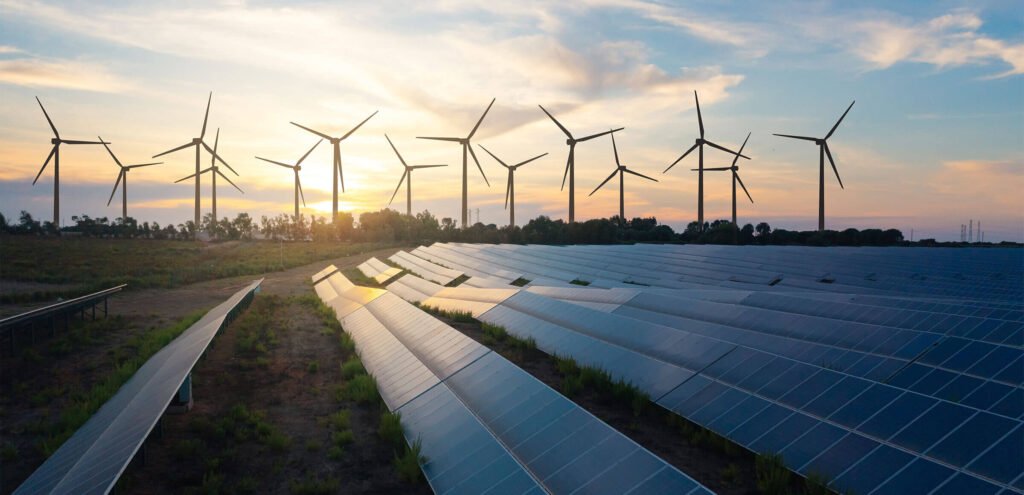February, 2022

Africa’s energy generation currently sits at 1.79 Exajoule (EJ), with renewable energy contributing 0.16 EJ. The most developed source of renewable energy is hydropower which is exactly at the global average of 7%. It is, however, unlikely that it will continue this dominance in the next decade as the focus is shifting away from dams – 75% of all dams used for hydropower in the continent are inactive.

Fig 1: Global and Africa Energy Mix
Breaking Down the Energy Mix
With Africa’s growing interest in renewable energy, South Africa and Egypt takes the lead in the solar and wind industries. In South Africa, wind is the primary source of renewable energy as it generates 55.6% of the country’s renewable energy mix. The biggest solar and wind power plants are Morocco’s Noor Ouarzazate solar complex (580 MW) and Kenya’s Lake Turkana wind farm (310 MW), both launched in 2018-2019. Egypt also had a major boost as the Ras Ghareb wind farm started operation in 2020.
Kenya generates 95% of Africa’s geothermal energu, ranking it 7th globally with key projects like Olkaria and Eburru, which started as early as 1981.
Biomass remains largely undeveloped in Africa, contributing only 0.005% to the energy mix. This is not peculiar to Africa alone, the global average for biomass is 0.3%. This low interest in biomass can be attributed to health and environmental concerns around CO2 emissions during the decomposition of organic waste.
Africa has Huge Potential

Fig 2: Africa Energy Potential by Source.
Africa’s potential for solar power is unmatched due to its geographical location, receiving the highest levels of solar irradiance globally. The continent’s theoretical solar energy potential is estimated at 1.45 million TWh per year, far exceeding the combined potential of the rest of the world. Wind energy, which is driven by solar heating, also holds immense potential in Africa, estimated at 978,066 TWh per year—enough to meet the continent’s energy demands 250 times over. Biomass and hydropower are also viable, with potentials of 2,374 TWh/yr and 1,748 TWh/yr, respectively.
A Gap Begging to Be Filled
IOCs are bowing to the pressure of energy transition but not much of it has happened in Africa. Just a few renewable energy projects (7) operating in Africa are run by an IOC, this is small when compared to over 50 projects operated by Big Oil in the rest of the world and more are in the pipeline with Shell, BP, and TotalEnergies winning bids in Scotland’s offshore wind. Judging by the estimated theoretical potential of Africa’s renewable energy, the level of investment so far has barely scratched the surface.

Fig 3: Active IOC Projects in Africa
“Investments are of little importance if they are not strategic.”
Out of Africa’s 235GW installed capacity, only 100GW is available. Legislative reforms and targeted investment in transmission and distribution infrastructure are essential to bridge this gap.

Leave a Reply